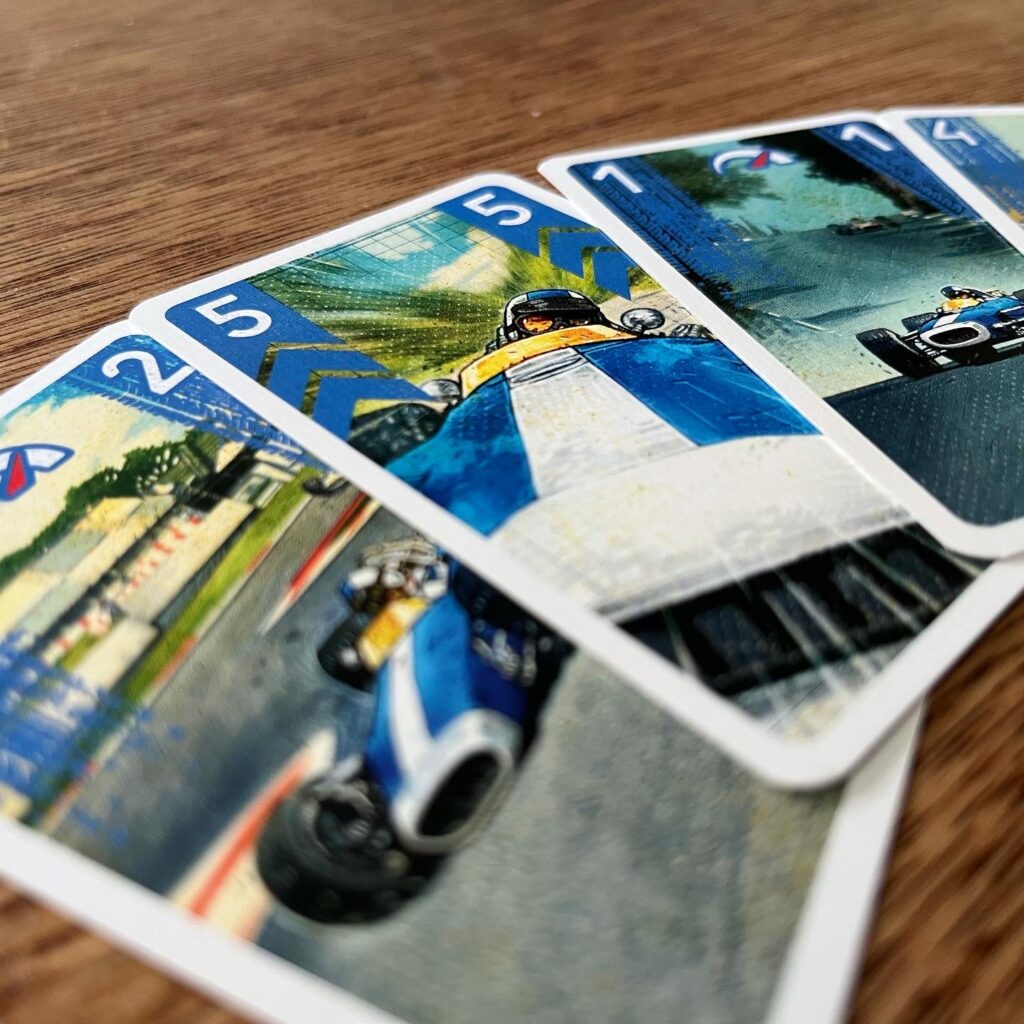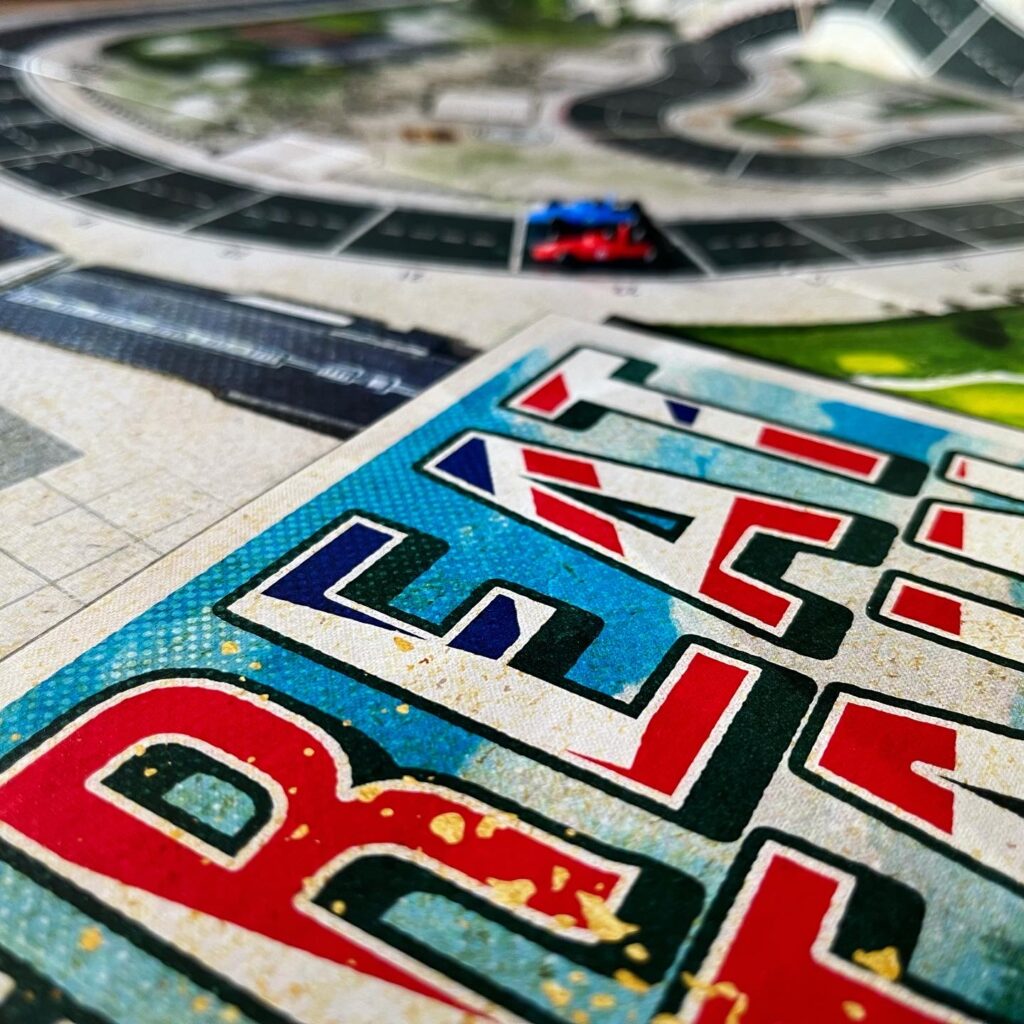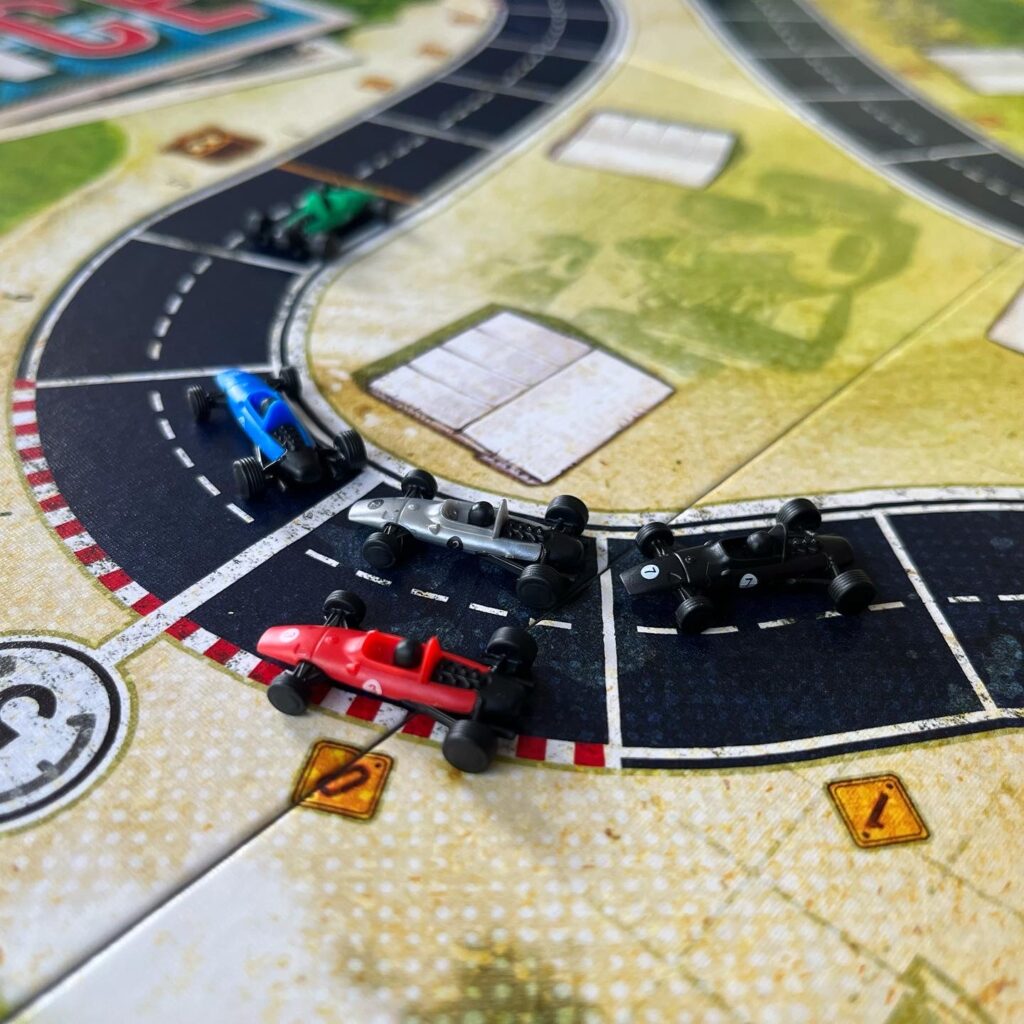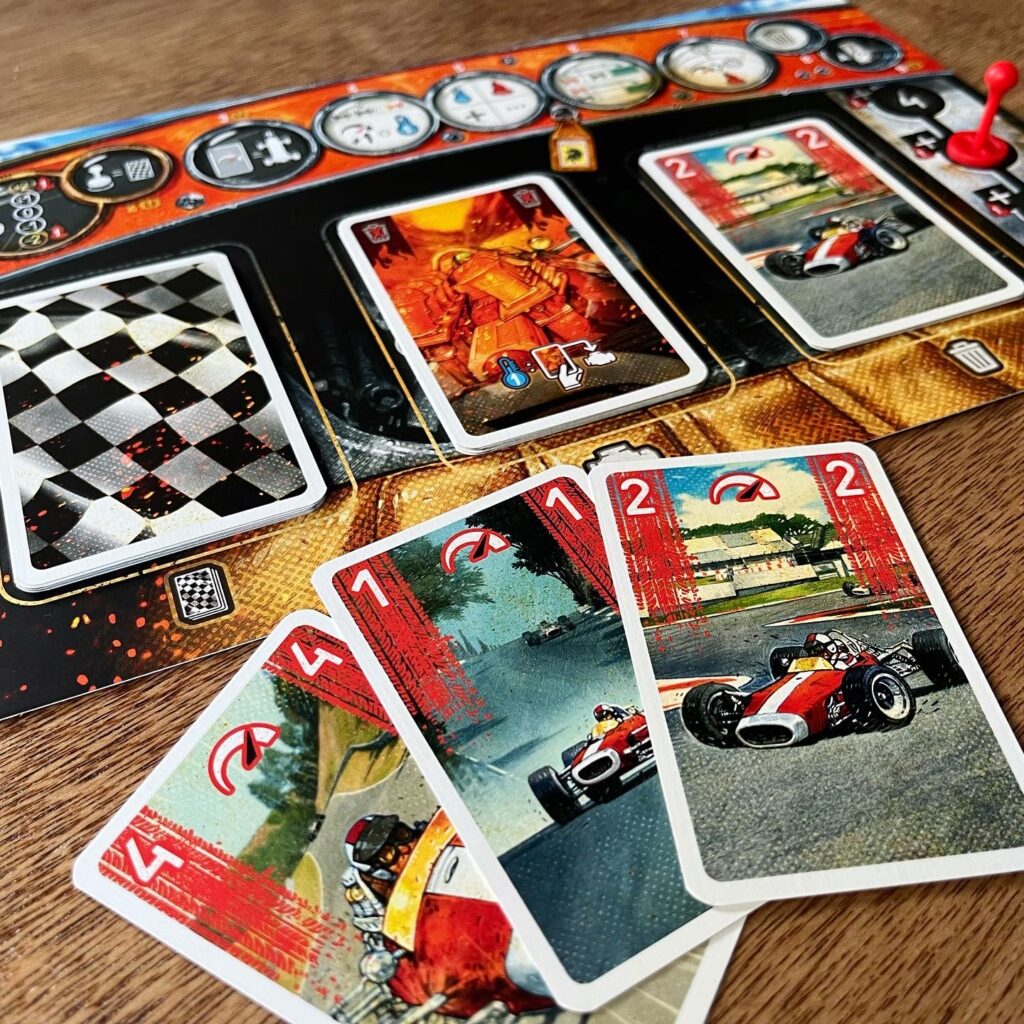We go back in time to the golden age of Formula 1. A period when daredevils, like legend Juan Manuel Fangio, got into very dangerous, cylindrical rockets on wheels to break all speed records and drive each other (like) crazy on the racetrack. Heavy engines, the smell of gasoline and burnt rubber. It’s time to race. Will you achieve pole position in the heat of the race in Heat: Pedal to the Metal?
Setup
Racers, take your starting positions and brace yourselves for the fastest qualifying lap ever. Depending on the modules chosen (players can assemble unique cars, race against classic legends or reenact an entire tournament), the gameplay may vary, but regardless of the variant chosen, the game sets up from 0 to 100 in mere seconds.

Lay out the chosen game board (there are four tracks/countries to choose from in total) in the centre of the table and give each player a tableau, a plastic car and gear stick and cards in their colour. Each player is also given a number of Stress cards and Heat cards. The Stress cards are shuffled together with the cards in the player’s chosen colour to form a personal draw pile. Players place the Heat cards on the engine on their tableau (also the dashboard of their car).
Players are now ready to start their engines, take 7 cards in hand and release the handbrake: pedal to the metal and floor it! It’s lights out and away we go!
Gameplay
Heat is a game with a refreshingly simple and fast-paced progression, which means there is little down time between players. In a round and turn, players go through different phases as very thematically depicted on their dashboard. This dashboard then also provides an easy reminder of the steps to be completed.
Getting into fifth gear, and perhaps taking a short cut while explaining, players start playing cards from their hand (they select these at the same time) each round. The values on the cards indicate how many squares they may move their car on the track. The player who crosses the finish line first (or in the case of a photo finish: furthest) has won! Heat, however, is not so simple that players can reach the finish just by playing cards. Players must therefore take into account various (gameplay) elements and concepts: shifting gears, Heat, Stress, slipstreaming and classic cornering.
Getting shifty
As the game is thematically set in the 1950s/60s, manual gearboxes were still fairly prevalent. Nothing like an automatic, but a classic gearbox to push to the max. Players have a total of four gears at their disposal. Of course, you can drive a lot faster in a higher gear if you want, because the chosen gear determines how many cards a player has to play during a round. In addition to their gears, players also have to deal with Heat.
Suffering from burnout…
Heat, also the game’s title, is perhaps the heart of this game. Heat is a kind of currency, but actually indicates the extent to which you are trying to get the most out of your car and especially the engine. Heat are the cards that players can use, for example, to change gears (to go faster or to slow down considerably) or to boost. At the start of the game, players start with Heat cards on their dashboard, but if you can/need to pay Heat, the card played goes to the discard pile and is later mixed with the rest of your cards. Heat cards are pretty useless if you have them in your hand and may also prevent you from playing enough cards to move forward: this causes stagnation.


To get Heat cards back on your dashboard, you need to let your car cool down by driving slowly. Make sure you do this in time to avoid getting saddled with useless cards or facing a burnt-out combustion engine, as this can cause a lot of stress. During a turn, if you decide to boost with a Heat card, you draw a card from your deck just until you draw card with a speedometer, and then move your car that amount of steps down the race track.
… or from stress?
In addition to Heat cards, there are also Stress cards and you don’t get rid of those easily either. By the way, you can play these cards to drive, but it is unclear how many squares your car will move if you are stressed. When you play a Stress card, you have to draw cards from your personal draw deck until a card with a speedometer is drawn similar to boosting. Your car will move as many squares as indicated on this card. That doesn’t sound too bad, but sometimes you don’t want to go too slow or too fast, because soon you won’t be able to use slipstreaming or maybe you’ll go crashing in the corner.
No DRS needed
If you are directly behind or next to another car after your move, you can make use of its slipstream: a lower pressure created by air currents, allowing you to go faster. The slipstream allows you to overtake the other car by 1 or 2 squares (depending on your original position). However, pay close attention to the road ahead of the other car, as corners can be dangerous.
Cutting corners
In many racing games, such as Formula D and Rallyman, players have to brake to avoid spinning out braking in the corner. In Heat, you shouldn’t want to take the corner too fast as well. Towards the end of the turn, you have to check to see if you have went through a corner. If so, check what your total speed was for this lap. Each corner has a speed limit and if you have exceeded it, you have to pay the difference in Heat or you will fly out of the turn.
Verdict
Heat is a super-fast racing game from the makers of Flamme Rouge and it has a little overlap in gameplay elements. Like Flamme Rouge, you play cards to move and you can slipstream and, like other racing games like Rallyman and Formula D, you have to pay attention to the corners, but the similarities are very limited and Heat stands out very successfully. So much for the inevitable comparison.



Heat is a great and fast-paced game. The game concept is super simple in principle, but through the various game elements as I describe above, you get a fast and intuitive racing game, with plenty of dynamics, excitement and risks. Players are mainly concerned with getting good cards in their hand as a kind of deckbuilder light. They only have a limited number of cards and also a limited number of Heat, so they have to be frugal with their cards and facilities. Stress and Heat pollute your hand, but can be deployed conveniently. Players should not be averse to taking a risk, but a mistake can cost you dearly.
The game feels like a real race and the colourful design and thematic game mechanics make you feel like a real driver. A game that will get this racing fan hot! Keep pushing!



